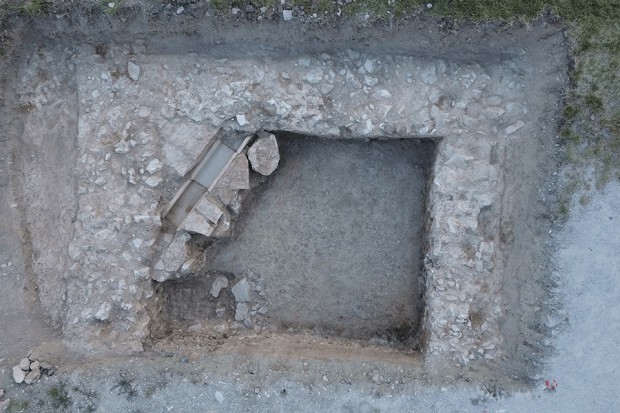Archaeologists have recently uncovered the structural remains of a medieval Roman cult temple in Spello, an ancient town in Italy, by analyzing a letter sent out by the 4th-century Roman Emperor Constantine.

The aerial shot of a Roman Imperial cult temple discovered in the ancient town of Spello in Italy, which was found by analyzing a letter written by the 4th-century Roman Emperor Constantine.
Implications of the Archaeological Finding
The structure itself was found at a hilltop within the ancient city and below a parking lot, comprising three inner walls of what is likely a monumental pagan temple. Its location was deduced from a letter by Saint Louis University history professor, Douglas Boin.
According to a release by the university, Constantine wrote the correspondence during his rule between 306 to 337 AD and was found sometime in the 18th century.
Its contents were essentially an authorization for the Spello citizens to celebrate a certain religious holiday without leaving their hometown.
In exchange for not being forced to travel great distances to partake in a faraway festival, the emperor ordered the construction of a temple to worship the Flavian dynasty, which Constantine believed to be his divine predecessor.
For the professor, this letter was a momentous find in and of itself, because through it we now understand that, even though the first Roman Emperor accepted being a Christian, he was still affiliating with "cult practice" and seeking to exalt an Imperial family linked to monuments like the Colosseum.
Read Also: The First-Ever US Climate Museum Offers Visitors Free Admission in Its Pop-Up Exhibit in SoHo, NYC
How the Ancient Cult Temple at Spello Was Discovered
"The location of this temple had never been securely identified," Boin explained in his statement within the release, continuing, " but because of the inscription and its reference to a temple, Spello offered a very tantalizing potential for a major discovery of an Imperial cult underneath a Christian ruler."
In their endeavor to physically locate the structure, Boin's team employed underground imaging technology for weeks before they finally received the first batch of promising data, which they used as the basis for the actual dig that followed shortly after.
The first parts of the structure to poke above the surface are two connected walls before the inside walls eventually resurfaced from the excavations.
As per Boin and his team, they will return to Spello in the upcoming summer to fully excavate the area and find out if more lies beneath the dirt.
However, for the professor, these initial findings are already huge enough as it is, especially due to the potential insights regarding how Constantine shifted from an old belief to a new one with Paganism and Christianity.
Although Constantine did adopt the Christian faith, even if not fully, the rest of the empire did not do so until Emperor Theodosius' rule which followed over seven decades later.
This is why the Spello temple discovery is a breakthrough, as it could explain how this gradual religious change transpired over years and years.
"It shows us how the Roman emperors continued to negotiate their values, hopes, and dreams for the future of the emperor and the Empire without knocking down or burying the past," said Boin.
Read More: Paint Thrown at Religious Icon of Stalin in Famous Georgia Church Following Controversy



